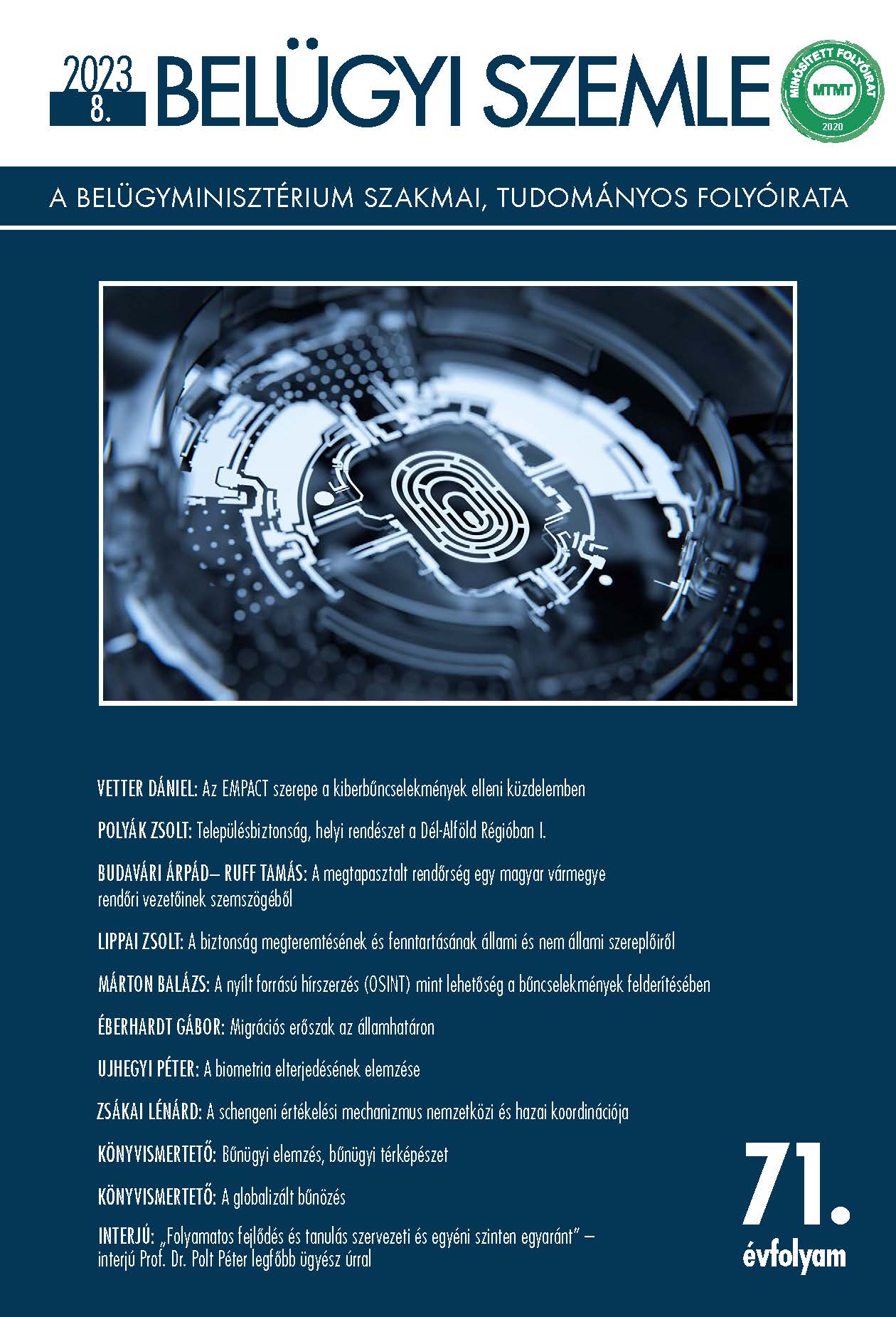Abstract
Aim: A brief introduction to this article gives an overview of the main parameters of identification solutions and the most common biometric identification solutions. The article then describes the biometric identification solutions used by border police in the EU and gives a brief comparison between current solutions and the vascular network-based solutions, highlighting the advantages of the vascular network-based solutions compared to the previous solutions. Next, the article summarises previous research related to the uptake of biometric solutions by presenting the results of a recent research.
Methodology: An analytical comparison of previous research on the uptake of biometrics at Óbuda University with the results with a recent study from 2022.
Findings: Education about biometrics can deepen awareness of the risks associated with the solutions, which can increase the risk of rejection and fear of the most powerful fears related to the handling and security of biometric data.
Value: The article points out that the risks could be reduced by stronger regulation of the use of biometrics and by standardisation and diffusion of data management and privacy solutions designed for biometrics.

